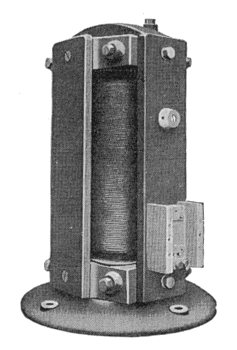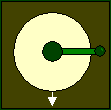The Early Years It all began in October 1882 when Thomas Parker moved to Wolverhampton and joined forces with Paul Bedford Elwell and founded Elwell & Parker. Thomas and Paul had previously collaborated to produce one of the first accumulators. Elwell ran the Patent Tip and Horseshoe Company in Commercial Road; one side of which was next door to the Crown Nail Company and the other side was next to what appropriately became the Commercial Road power station. The new company was housed in a corner of the Commercial Road works, the electrical department staff consisted of Thomas, his son and a man.
Another dynamo was soon built for a lighting installation at Trafalgar Collieries in the Forest of Dean. This is believed to be the first instance of electricity being used underground in this country. The company also received an order for some dynamos, from the Manchester Edison Company, and were paid a £1,000 in advance. The new electrical manufacturing business was proving to be a great success, and so horseshoe manufacture ceased, and Elwell-Parker Ltd. was formed, to concentrate on producing the new electrical products. For a short time, the new company was known as the Wolverhampton Electric Light, Power, Storage and Engineering Company. In 1885 considerable additions were made to the premises. In 1884 to 1886 Elwell-Parker installed one of the earliest examples of electric traction in the world, at Blackpool. It was a slot system of collection, the conductor being composed of two copper tubes of elliptical shape attached to iron studs, which were supported in porcelain insulators, which were mounted on blocks of creosoted wood in the sides of the channel. At each end of the car there was a switch box with resistance coils placed under the platforms, by which means the strength of the current and speed of the car could be regulated. To reverse the direction in which the car was travelling, the direction of the current through the armature was reversed. The shunt-wound field coils were always magnetised in the same direction. Each car was driven by a single bipolar, reversible motor, the drive being transmitted by an open chain to one of the two truck axles.
The company continued to be successful and soon outgrew the Commercial Road premises. Land was purchased in Bushbury for the building of a new factory. The following is a list of some of the products that were produced by the company:
In 1888 the company installed a Lowrie-Parker dynamo at the West Brompton Station of the House to House Electric Light Supply Company, and in the same year developed an automatic circuit breaker which was fitted with a free handle device. This was later patented by the E.C.C. By 1889 the company had 400 employees, and the works operated both day and night. In the same year a large syndicate was formed to manufacture electrical equipment of the type already made by Elwell-Parker. The syndicate founded the Electric Construction Corporation Limited and purchased a number of prominent manufacturing companies to form the new corporation. Thomas Parker was invited to London in 1888, to meet Mr. Balfour, from the Corporation, regarding the purchase of Elwell-Parker, Limited. Terms were agreed and Elwell-Parker, Limited was absorbed into the new concern, as from 30th September, 1888. |





